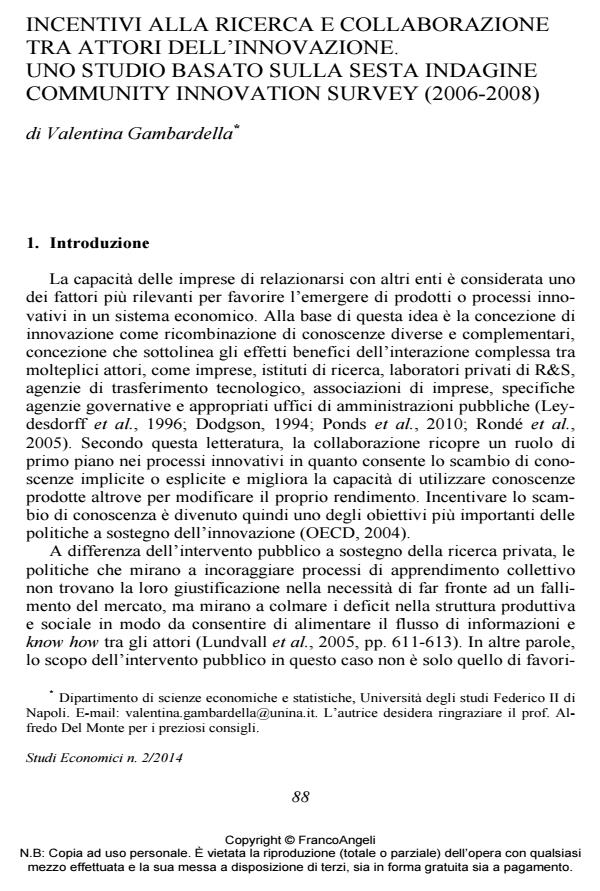Public funding and collaboration among different actors of innovation. A study based on the Sixth Community Innovation Survey
Journal title STUDI ECONOMICI
Author/s Valentina Gambardella
Publishing Year 2015 Issue 2014/113
Language Italian Pages 28 P. 88-115 File size 130 KB
DOI 10.3280/STE2014-113004
DOI is like a bar code for intellectual property: to have more infomation
click here
Below, you can see the article first page
If you want to buy this article in PDF format, you can do it, following the instructions to buy download credits

FrancoAngeli is member of Publishers International Linking Association, Inc (PILA), a not-for-profit association which run the CrossRef service enabling links to and from online scholarly content.
Economic leterature has stressed the importance of collaboration among accademia, industry and government as a key driver of innovation. This paper analyses the effects of public funding in promoting cooperation in innovation activities in Italy and in Germany, using data from the sixth Community Innovation Survey. The results show that in both countries receiving public support is positively related to undertaking collaborative innovation, but in Germany this relationship is the strongest. In Italy it varies depending on the funding source, whereas regional incentives on promoting collaboration are weak. This result is largely related to the size of the firm benefiting from this type of pubblic support (small and medium-sized firms) and from the industrial sector theyb belong to (low-technological industries). Additionally, the data show that public financial support also influences the choice of partners, making it easier for firms to adopt a more complex rqange of linkages, including suppliers, clients, and reaserch institutions.
Keywords: Innovation policy, Cooperation, Public funding: Behavioural additionality, Community Innovation Survey
Jel codes: O31; O32
Valentina Gambardella, Incentivi alla ricerca e collaborazione tra attori dell’innovazione. Uno studio basato sulla sesta indagine Community Innovation Survey (2006-2008) in "STUDI ECONOMICI " 113/2014, pp 88-115, DOI: 10.3280/STE2014-113004